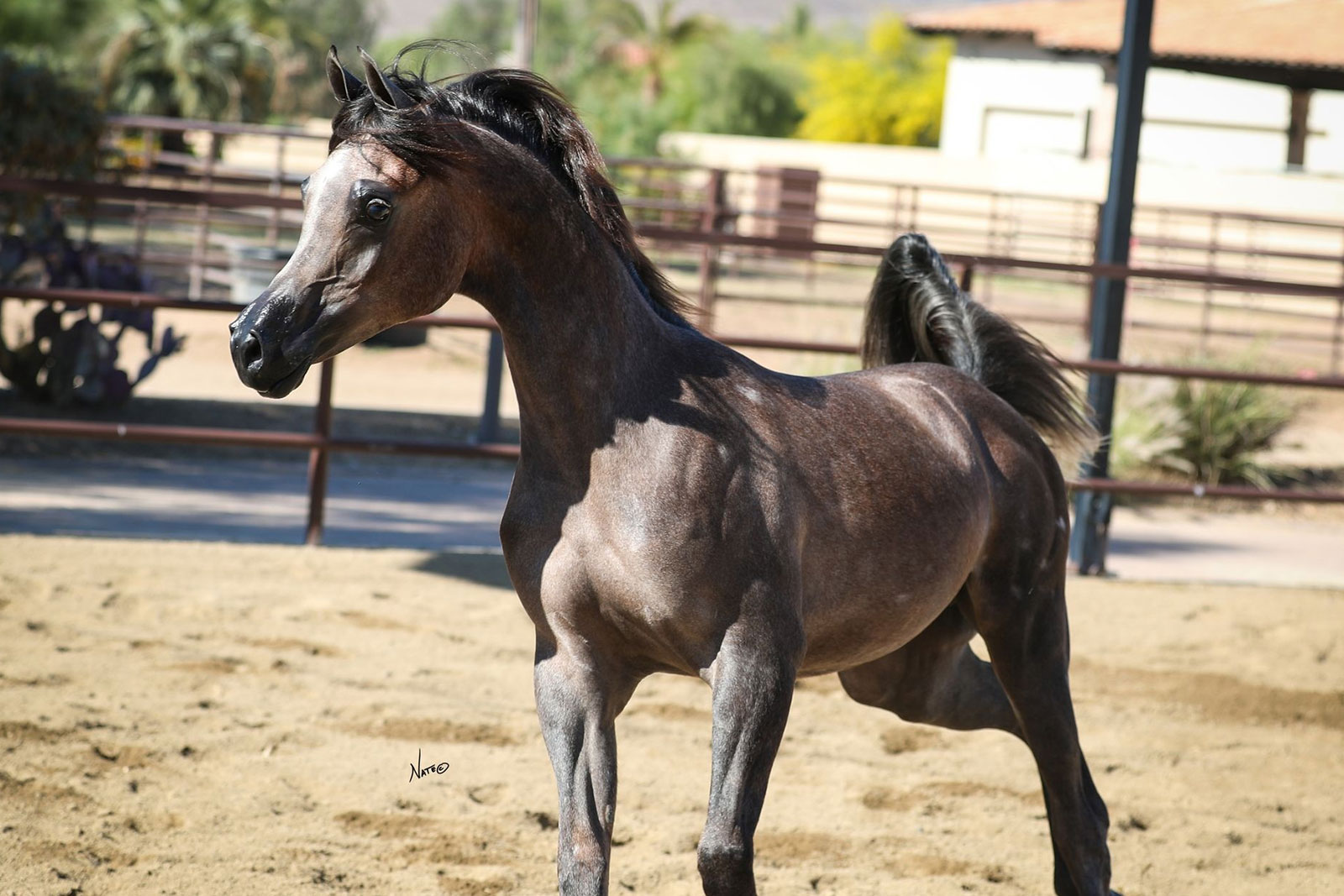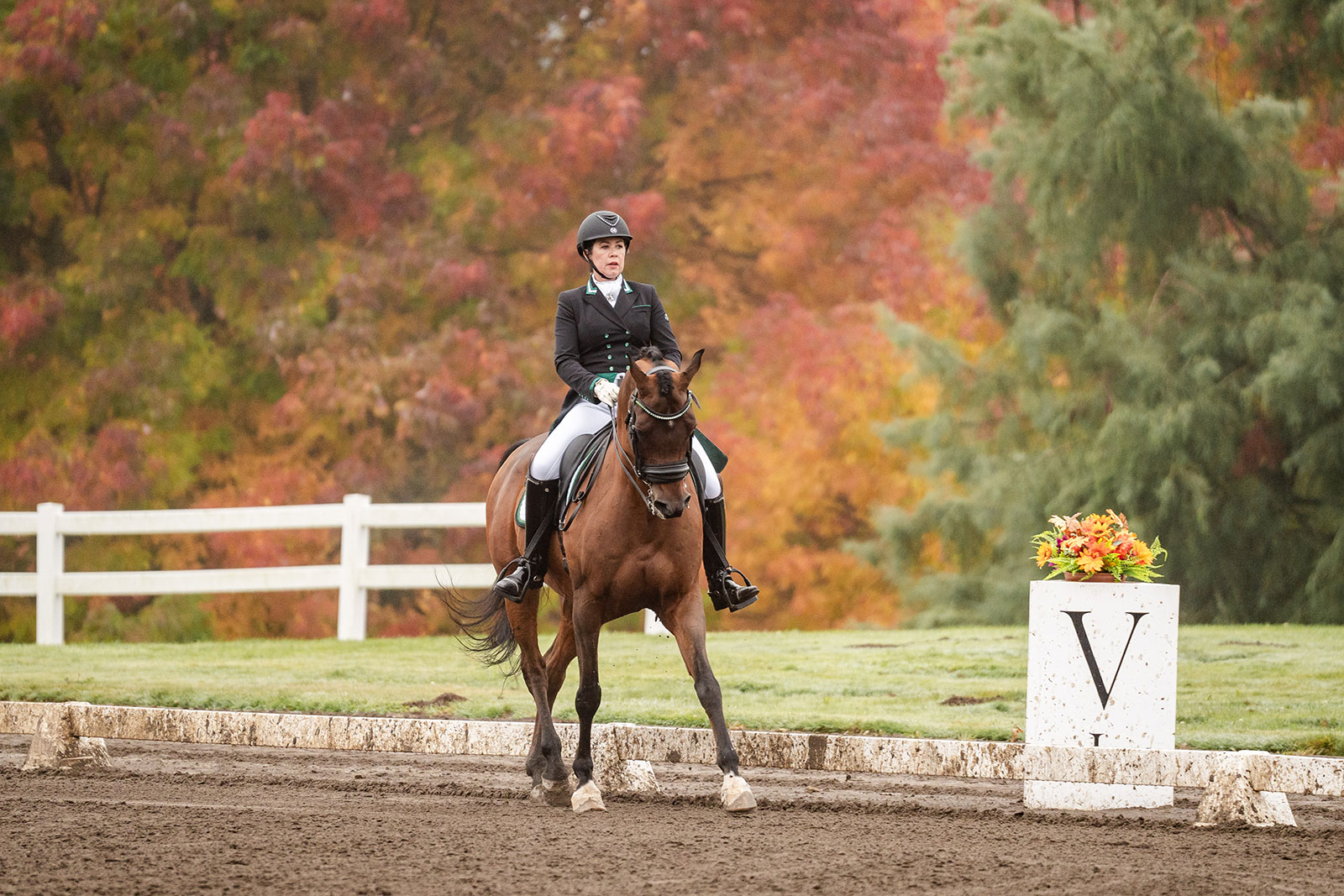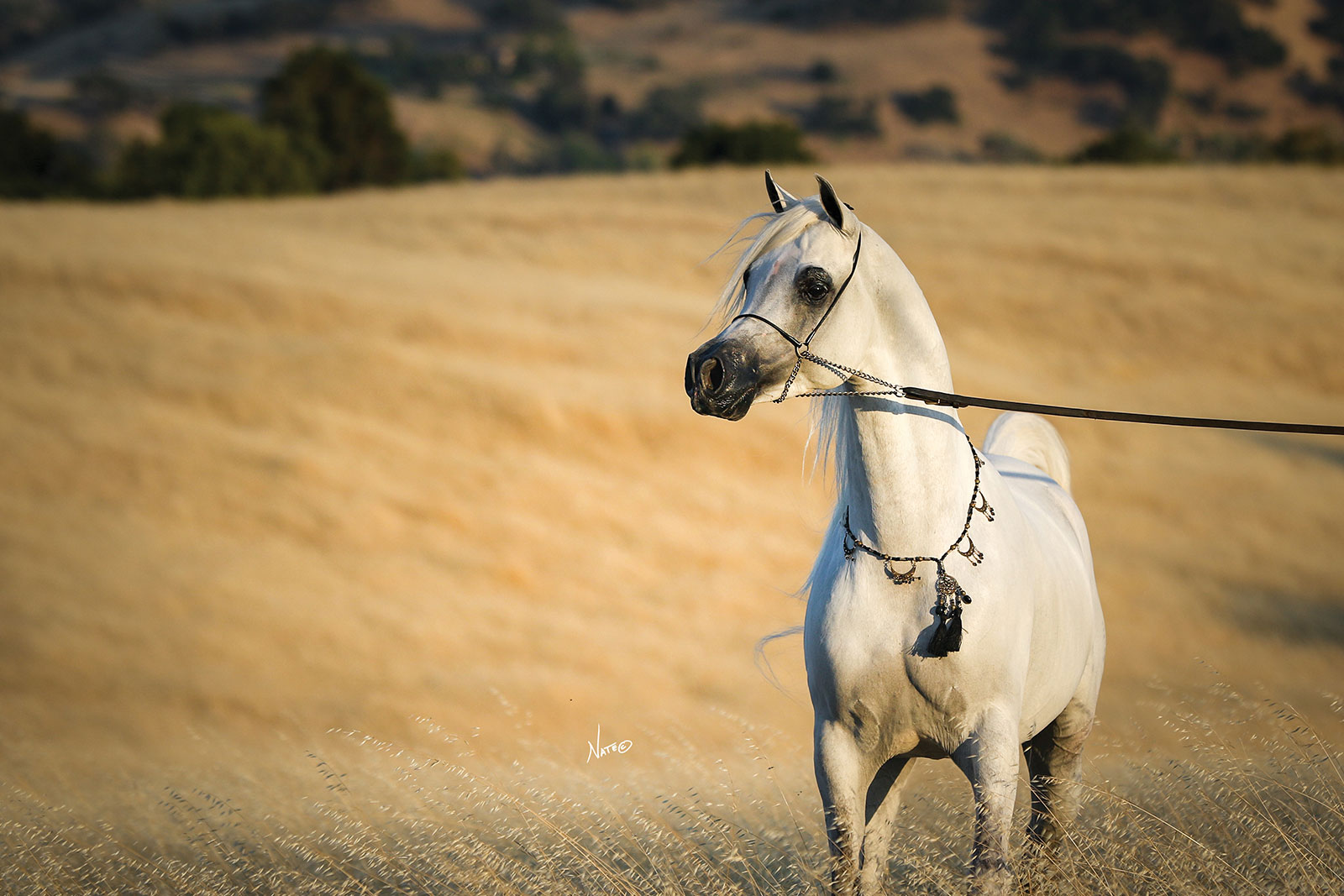By Cindy Reich
As featured in the September 2011 Issue of Arabian Horse World.
September is all about weanlings. Foals are either being weaned, or have just been weaned, or for late-born foals — still to be weaned. In any event, it can be hard time for the little ones. Lots of changes happen at once, and it can be overwhelming for weanlings unless you plan ahead and do your best to help these youngsters take it all in stride.
Weaning
Weaning is a stressful time for both mare and foal, and your approach to the process can go a long way toward making it traumatic or tolerable. This is when I see the greatest percentage of illness and injury in foals. If you put yourself in the foal’s position for a moment, you can gain some understanding of how traumatic weaning can be. Horses are herd animals to whom numbers mean safety and security. A foal has always had, at minimum, its dam by its side since birth. For foals that are in group situations with other mares and foals, the herd becomes the place of safety and security. To be separated from the dam or the herd in the wild would most likely mean death. For a herd animal, to be alone is extremely traumatic and stressful — for a foal who has never been alone it is monumental. Evolution has programmed the horse to seek out and be with others. Depending on the method of weaning used, the foal is suddenly alone and a very strong sense of self-preservation takes over. People anthropomorphize, saying, “Oh, the foal is just being a baby — look how it misses its mother — it needs to grow up.” A more accurate interpretation might be: “I am alone — where is everyone? I am alone! I must find the others! I am alone! ” In this panicked state, a foal will often go through fences, paddocks, or whatever is between it and its dam and/or other horses.
I prefer to wean foals gradually whenever possible. If the mares and foals are in a group situation, removing the mare to an adjoining pen is easiest on both mare and foal. They can see each other, but the foal cannot nurse. Now this only works if you have good fencing and the mare is sharing a fence line with the foal. I have found that in this situation, the foal may hug the fence or a few days but will gradually drift off and rejoin the rest of the herd. The amount of time this takes varies depending on the foal. Then the mare is quietly removed to another part of the farm. In this system, the foal remains in familiar surroundings with other mares and foals and doesn’t lose its sense of safety and security. The mare, also, gradually accepts being away from the foal with far less stress.
If you try to do this by removing the mare several paddocks away, the foal will generally panic and try to go through the fence to get to its dam. Not a good plan. If they share a fence line, they will usually just stand there but there will be no panic or attempts to go through the fence. A word of caution: do not use this method if the fence is wire or in disrepair. If the fence does not provide an obvious barrier, the foal will likely try to go through the fence. A sturdy fence that creates a strong visual barrier, for example, one made of wood or woven wire, will prevent the mare or foal from trying to go through it.
Another method of gradual weaning is to remove the foal at night and put it in a stall next to the mare. This way, the mare will reduce (but not stop) milk production, and the foal will learn that it can be separated from the mare without too much panic. Again, it is important that the mare and foal be in adjacent stalls where they can see each other. If you put them at a distance from one another, the stress and panic will increase, with much more vocalization and agitation. The plan is to keep stress and trauma to a minimum.
The abrupt method of weaning mares and foals occurs when they are physically separated by both sight and sound all at once. Usually, the foals are brought to a separate facility and the mares left in pasture. It is more dangerous to leave the foals in a paddock or pasture and remove the mares, because panicky foals are much more apt to run through or into fences than mares in the same situation. While I feel that this method of weaning is the most stressful for both mares and foals, the reality is that on many farms this is the way weaning is done. It requires less labor and effort than gradual weaning, but the price may be paid later in terms of stress, ulcers, and a foal that is slow to thrive.
If foals are weaned abruptly, some of the stress can be reduced if they have some companionship. Therefore, if you are weaning several foals, put them together in small groups in stalls or paddocks so that they are not alone. If you are only weaning one foal, see if you can find someone else who might have a foal to wean and wean them together. However, if no foals are available, try an older, quiet mare or gelding, but make sure they are not aggressive toward the foal in any way. If no horses are available, calves, goats, donkeys, sheep, and even pigs have made decent foal companions.
It is important that you make sure the foal is comfortable if it is weaned in a stall before being turned back into a paddock. If turned out too soon, it may run the fences looking for its dam. This is acceptable within reason — if it respects the fences and terminates the behavior after a short while. If the foal is still running the fence an hour after it’s been turned out, it is not ready.
The only advantage of weaning foals in stalls is that if the stalls are well made, they are secure and foals are less likely to injure themselves because they can’t build up a big head of steam to run around. The stall should be made “baby proof ” however, with buckets, eye hooks, feeders, and other potential “foal traps” removed before the foal goes in.
When to Wean?
In the wild, foals may often stay with their dam until the next year’s foal is born — more so with fillies than colts. When to wean varies from farm to farm. I have weaned foals as early as two months, (if the dam has medical problems) to nine months. Generally, the longer you can leave the foal on the dam, without compromising her condition, the better condition the foal will be in when it is weaned. Studies have shown that the foal is not getting much nutritional value from the mare’s milk by four months of age, but the emotional attachment and soothing it receives from nursing cannot be underestimated.
If the mare is losing condition (especially common in older producing mares) even with supplemental feeding of both mare and foal, it may become necessary to wean earlier. However, separating the mare and foal at night in the longer weaning protocol gives both mare and foal a chance to gain added nutrition as they are able to eat separately all evening.
Vaccinations and Deworming
In the past, many farms used to bring the foals up at weaning, vaccinate, deworm them, and then wean them — all in the same day. It’s amazing to me now that foals survived such an overwhelming assault on their systems. Not only were they put under an enormous amount of stress — which adversely affected their immune system — we would then vaccinate them with several products at the same time — adding further insult to their immune system.
However, by no means did foals sail through this procedure. Diarrhea, respiratory infections, fevers — all were not unusual with this type of weaning protocol. I am not a veterinarian, but what I do is to wean foals first, and only when they are settled for several weeks, eating well and bright and alert, do I consider vaccinations and deworming. Foals gain immunity to various diseases from the colostrum they consumed when they were born. Gradually, their own immune system starts to develop, and usually by five to six months of age, their immune system is capable of responding to vaccinations by building up immunity in the foal. Back in the day we used to start vaccinations at two months of age. We now know that early vaccination had absolutely no effect, as the foal was still operating off the immunity conferred on it by the dam’s colostrum. Now veterinarians recommend starting vaccination protocols at 5-6 months for foals and not earlier than 4 months.
The American Association of Equine Practitioners (AAEP) posts the following guidelines for foal vaccinations. (These guidelines are for foals from vaccinated mares.)
- Tetanus — 3 doses: First at 4-6 months, second dose 4-6 weeks after first dose, third dose at 10-12 months.
- Eastern/western encephalitis — same protocol as for Tetanus.
- Rabies — 2 doses: First dose at 6 months, second dose 4-6 weeks after first dose.
- West Nile virus — depends on the product used. Consult your veterinarian.
These are considered the “core” vaccinations for foals. There are other diseases that owners can vaccinate their foals for, depending on what the risk factor is in their situation. Some of those diseases include influenza, strangles, anthrax, botulism, equine herpesvirus, Potomac horse fever, and equine viral arteritis (colt foals only). You can get more information by visiting the AAEP website: www.aaep.org.
As far as deworming is concerned, I will usually deworm a newborn foal within the first 24 hours of birth. This is primarily to stop the transfer of strongyloides westeri (threadworms) from the mare’s milk to the foal. This helps to prevent “foal heat” scours that were formerly incorrectly thought to be caused by hormone levels in the mare’s milk.
Foals can be dewormed starting at 2-3 months of age. The frequency of deworming depends on many factors, among them: exposure to parasites on the farm; frequency of deworming of other horses on the farm; and frequency of horses in and out of the facility. Determining the amount of parasites being shed by other horses on the farm is considered a useful way to develop a deworming program. Doing fecal counts on horses before deworming can give you an idea of how well your deworming program is working. Horses with more than 300 eggs per gram in their feces are considered “heavy” shedders and may signal that it is time to deworm. “Low” shedders (fewer than 300 eggs per gram in feces) may only need to be dewormed
twice a year.
When you are deworming foals, never use moxidectin in foals less than one year of age as it has caused some deaths due to overdosing. Deworming the foal at weaning (4-6 months) is a normal farm practice, but I would add that it would be a good idea to do a fecal count 10 days to two weeks after the deworming to determine if the product used has been successful. I also choose not to deworm until after the foal has settled down from the stress of weaning. The schedule for further deworming of the foal will depend on your farm’s individual program.
Feeding
I often see newly weaned foals that just don’t look well. They have a potbelly, rough coat, may have ribs showing and appear depressed and lack energy and vitality. It is a good bet that such foals have gastric ulcers and are also not getting adequate nutrition. Contrast that with other foals I often see on farms that are hog fat, with fat pads along their necks, and exhibiting signs of epiphysitis in their fetlock joints. It seems that owners do one of two things with newly weaned foals — feed them too much or not enough.
Even though foals begin eating hay and grain along with their mother by a few weeks of age, they will be getting the majority of their nutrition from the mare’s milk until four months of age. Depending on the foal’s body condition, I may creep feed foals in a group situation — particularly if there is not adequate forage in the pasture. Horses were designed to eat all the time and in fact, their stomach secretes acid all the time (which is why they tend to get ulcers when confined and fed only twice a day). Foals eat even more — they graze, eat with their dams from the feed trough if they can, and they nurse. If mares are hogging all of the food, I will set up a creep feeder with free choice hay and a small amount of a low calorie, low carbohydrate, and mild protein content feed.
A study in which weaned foals were put on concentrates or on hay cubes showed that they had significantly more ulcers than foals that ate forage only (hay or alfalfa). If you start foals on a safe nutritional plane prior to weaning, they will be in better condition when weaning occurs. The key is to maintain a constant intake of food (pasture or frequent hay feedings) after weaning to reduce the likelihood of ulcers and maintain condition.
Foals that are in poor shape prior to weaning are often suddenly taken away from a constant feeding situation (milk — even if no forage constantly) and put into a stall or pen where they are fed once or twice a day. No wonder their condition declines even further — they likely are
suffering from ulcers in addition to not eating properly. Provide the foals multiple feedings of hay with perhaps the addition of alfalfa depending on the situation if they are not on a pasture with good forage. Restrict concentrates unless absolutely necessary. Foals can be potbellied and ribby in overfeeding situations as well, due to the presence of ulcers and inability to properly digest their food. Fat foals are not necessarily healthy foals. Foals should not have noticeable fat over their ribs or along their necks. Their joints should be clean and sharp, with no swelling.
Management
While I prefer to halter break foals at one to two weeks of age, many farms begin halter breaking and handling foals at weaning. I have found it is much easier to introduce a foal to a halter and the concept of coming away from pressure when it is 120 pounds as opposed to 400 pounds.
However, if the foal is to begin its halter training at weaning, it is a good idea to give it a week or so to begin to recover from the trauma of weaning so that it can devote its attention to the new lessons it will be learning. Don’t overwhelm foals with too much work at one time. Their attention span, even at 6 months of age, is still short.
If the foal is going to be confined in a stall at first and is not halter-broken, putting a halter on it with a cotton lead rope that just brushes the ground will allow it to start to figure things out for itself without the added stress of humans in the equation. When foals find that no matter where they go, the rope follows them, they eventually accept the halter rope trailing around with them. This can be very useful because foals not conditioned to having the rope all over them are often like an exploding bomb the first time they get loose and find the rope chasing them. Stepping on the rope teaches them to come away from pressure without being in a pressure situation themselves. Do not use a rope that is more than a few inches longer than the distance from the head to the ground. Letting foals drag ropes long enough to wrap around a leg is a recipe for disaster. Halter breaking is the second highest cause of foal injuries in my experience (after weaning). Although I addressed halter breaking of foals in Stud Farm Diaries many years ago, it may be time soon for a refresher.
Keep alert to the newly weaned foal’s attitude. Depression, going off feed, or poor condition can signal disease as well as ulcers. A healthy foal is bright, alert, and active. Any foal that is acting abnormally on our farm will automatically have vitals taken, including its temperature. A spike in temperature can be an early warning of something more serious that may be incubating, so be sure to contact your veterinarian if your foal develops a fever. Watch for signs
of a nasal discharge, rapid breathing, and other signs of respiratory distress. Weaned
foals that are kept in stalls without adequate ventilation are susceptible to pneumonia and other respiratory problems. Often, the stress of weaning, combined with an aggressive vaccination protocol at the same time can overwhelm the foal’s immune system and leave it
vulnerable to diseases it might normally shrug off.
We monitor weaned foals very closely for the first two weeks after weaning.
Weaning is also a good time to separate the colts and fillies if you are weaning multiple foals. If you leave them too long together, you may have an unfortunate “surprise” the following summer. Colts can impregnate fillies at 8 months of age and sometimes sooner. Don’t take the chance.
Meanwhile, as the leaves turn, the heat starts to decline, and the days become shorter, foals at stud farms everywhere are learning to live without their mothers, but hopefully have integrated into other horse groups that give them emotional and physical security. They have learned (or are learning) how to be a good citizen by leading quietly without leaning into pressure, can have their feet picked up without a fuss, and look forward to their interactions with people. They are in good body condition, without being too fat or too thin, and the baby coats are being shed just in time for the winter hair to start coming in. By all accounts, this winter they may need all the hair they can grow up here in the mountains.






